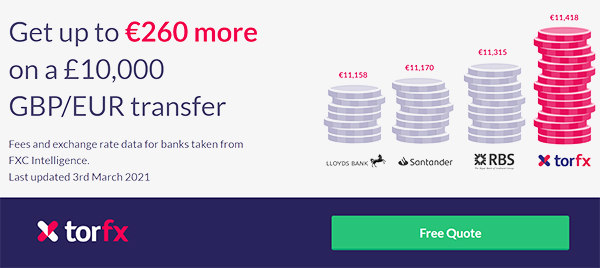Pound to Dollar Week Ahead Forecast: GBP/USD Struggle Near 1.36
- Written by
Frank Davies

Most investment banks are still reluctant to forecast the Pound to Dollar (GBP/USD) exchange rate trading above 1.40.
HSBC, for example, forecasts that GBP/USD will trade at 1.37 at the end of 2025 with a retreat 1.35 at the end of next year.
Many banks do see scope for the dollar to weaken further, but expect the Pound will struggle to take advantage.
HSBC commented on the Pound; “For GBP, the Autumn Budget stands as a major risk. Higher taxes could alter the outlook for inflation and unemployment.
GBP/USD tested 6-week highs just below 1.36 during the week before edging lower.
During the week ahead, UK inflation and comments from Fed Chair Powell will be crucial.
The latest UK GDP data was stronger than expected with 0.4% growth for June compared with consensus forecasts of 0.2%.

Growth for the second quarter slowed to 0.3% from 0.7% previously, but above expectations of 0.1%.
There was, however, a strong contribution from government spending and underlying components were less favourable.
According to MUFG; “the positive impact on the pound from stronger headline growth has been dampened somewhat by the less favourable breakdown of expenditure in Q2.”
MUFG commented; “Overall, the report is unlikely alter market expectations that the BoE is becoming more cautious over delivering further easing this year. The BoE indicated earlier this month that it is less confident it will continue to cut rates every quarter.”
According to UBS; “With the hawkish-leaning Bank of England (BoE) meeting and the somewhat stronger GDP release behind us, the focus will shift to UK inflation data, due next Wednesday.
UBS added; “Should the data support the BoE’s more hawkish stance, this could lend further support to the pound. However, we argue much is in the price already and do not foresee a sharp rally—we expect the 1.38 resistance level (the year-to-date high) to only be broken sustainably later in the year.”
Markets remain very confident that the Fed will cut interest rates at the September meeting despite doubts whether the fundamentals justify a rate cut at this stage.

JP Morgan commented; “It's not unprecedented for the Fed to ease when stocks are at or near all-time highs. It’s rarer when stocks are at the highs and inflation is above target and inflecting higher. So, an ease next meeting isn't likely to be broadly welcomed by the Committee.
According to HSBC; “It is worth looking back in time when political pressure for the Fed to lower interest rates occurred amid a US stagflationary setting (i.e. the 1970s ). This episode coincided with material underperformance of the USD. This is not our baseline scenario but we need to be aware of the past to gauge any future risks.”
Scotiabank continues to see underlying dollar vulnerability; “If the Fed does opt to ease amid intense political pressure for lower rates and stubborn inflation, investors may become more concerned that the Fed’s inflation anchor is slipping which can only weaken the appeal of the USD.”
STORY LINK Pound to Dollar Week Ahead Forecast: GBP/USD Struggle Near 1.36

Most investment banks are still reluctant to forecast the Pound to Dollar (GBP/USD) exchange rate trading above 1.40.
HSBC, for example, forecasts that GBP/USD will trade at 1.37 at the end of 2025 with a retreat 1.35 at the end of next year.
Many banks do see scope for the dollar to weaken further, but expect the Pound will struggle to take advantage.
HSBC commented on the Pound; “For GBP, the Autumn Budget stands as a major risk. Higher taxes could alter the outlook for inflation and unemployment.
GBP/USD tested 6-week highs just below 1.36 during the week before edging lower.
During the week ahead, UK inflation and comments from Fed Chair Powell will be crucial.
The latest UK GDP data was stronger than expected with 0.4% growth for June compared with consensus forecasts of 0.2%.

Growth for the second quarter slowed to 0.3% from 0.7% previously, but above expectations of 0.1%.
There was, however, a strong contribution from government spending and underlying components were less favourable.
According to MUFG; “the positive impact on the pound from stronger headline growth has been dampened somewhat by the less favourable breakdown of expenditure in Q2.”
MUFG commented; “Overall, the report is unlikely alter market expectations that the BoE is becoming more cautious over delivering further easing this year. The BoE indicated earlier this month that it is less confident it will continue to cut rates every quarter.”
According to UBS; “With the hawkish-leaning Bank of England (BoE) meeting and the somewhat stronger GDP release behind us, the focus will shift to UK inflation data, due next Wednesday.
UBS added; “Should the data support the BoE’s more hawkish stance, this could lend further support to the pound. However, we argue much is in the price already and do not foresee a sharp rally—we expect the 1.38 resistance level (the year-to-date high) to only be broken sustainably later in the year.”
Markets remain very confident that the Fed will cut interest rates at the September meeting despite doubts whether the fundamentals justify a rate cut at this stage.

JP Morgan commented; “It's not unprecedented for the Fed to ease when stocks are at or near all-time highs. It’s rarer when stocks are at the highs and inflation is above target and inflecting higher. So, an ease next meeting isn't likely to be broadly welcomed by the Committee.
According to HSBC; “It is worth looking back in time when political pressure for the Fed to lower interest rates occurred amid a US stagflationary setting (i.e. the 1970s ). This episode coincided with material underperformance of the USD. This is not our baseline scenario but we need to be aware of the past to gauge any future risks.”
Scotiabank continues to see underlying dollar vulnerability; “If the Fed does opt to ease amid intense political pressure for lower rates and stubborn inflation, investors may become more concerned that the Fed’s inflation anchor is slipping which can only weaken the appeal of the USD.”
International Money Transfer? Ask our resident FX expert a money transfer question or try John's new, free, no-obligation personal service! ,where he helps every step of the way, ensuring you get the best exchange rates on your currency requirements.
TAGS: Pound Dollar Forecasts
Comments are currrently disabled
Related Stories:
- Pound to Dollar Week Ahead Forecast: GBP/USD Struggle Near 1.36 - August 18, 2025
- Pound to Dollar Forecast: GBP/USD Unable to Break Resistance Levels - August 17, 2025
- Pound Sterling Forecast: Banks See Euro Gains, Dollar Weakness - August 15, 2025
- Pound Sterling to Dollar Forecast: GBP/USD Eyes Bullish Break Amid Fed Speculation - August 15, 2025
- GBP/USD Forecast: Pound Sterling Softens on Robust US PPI - August 14, 2025
- Pound to Dollar Mid-Week Forecast: 1.3500 Support and 1.3620 Resistance - August 13, 2025
- Pound-to-Dollar Forecast: Sterling at 20-Day Best on Fed, Data Jitters - August 13, 2025
- Pound to Dollar Forecast: "Little Resistance Ahead of Upper 1.35 Area" - August 13, 2025
- GBP/USD Forecast: Pound Sterling Extends Gains after US Inflation Disappoints - August 12, 2025
Latest News:
- Euro to Dollar Week Ahead Forecast: EUR/USD Upside on Fed Weakness - August 18, 2025
- Pound to Dollar Week Ahead Forecast: GBP/USD Struggle Near 1.36 - August 18, 2025
- Pound-to-Euro Forecast: Short-Term GBP Gains but 2025 Weakness - August 17, 2025
- Pound to Dollar Forecast: GBP/USD Unable to Break Resistance Levels - August 17, 2025
- Euro to US Dollar Forecast: EUR/USD's "Upward Momentum has Faded" - August 17, 2025
- Pound-to-Euro Forecast: GBP Pulls Back as EUR Recovers - August 15, 2025
- Pound Sterling Forecast: Banks See Euro Gains, Dollar Weakness - August 15, 2025
- Euro to Dollar Forecast: "Fed Rate Outlook" to Lift EUR/USD - August 15, 2025
- Pound Sterling to Dollar Forecast: GBP/USD Eyes Bullish Break Amid Fed Speculation - August 15, 2025
- British Pound-to-Euro Strikes Five-Week Best following UK GDP - August 14, 2025








